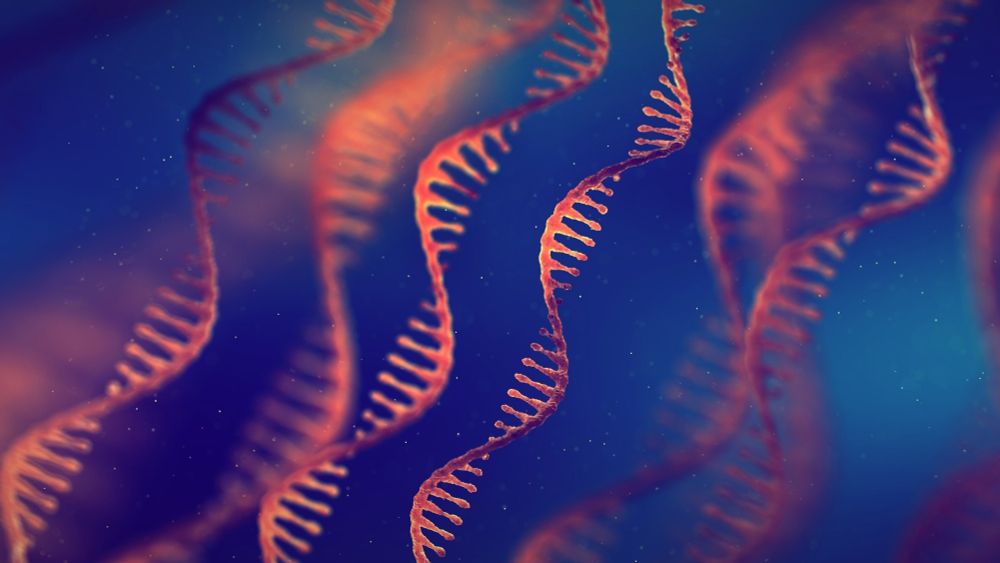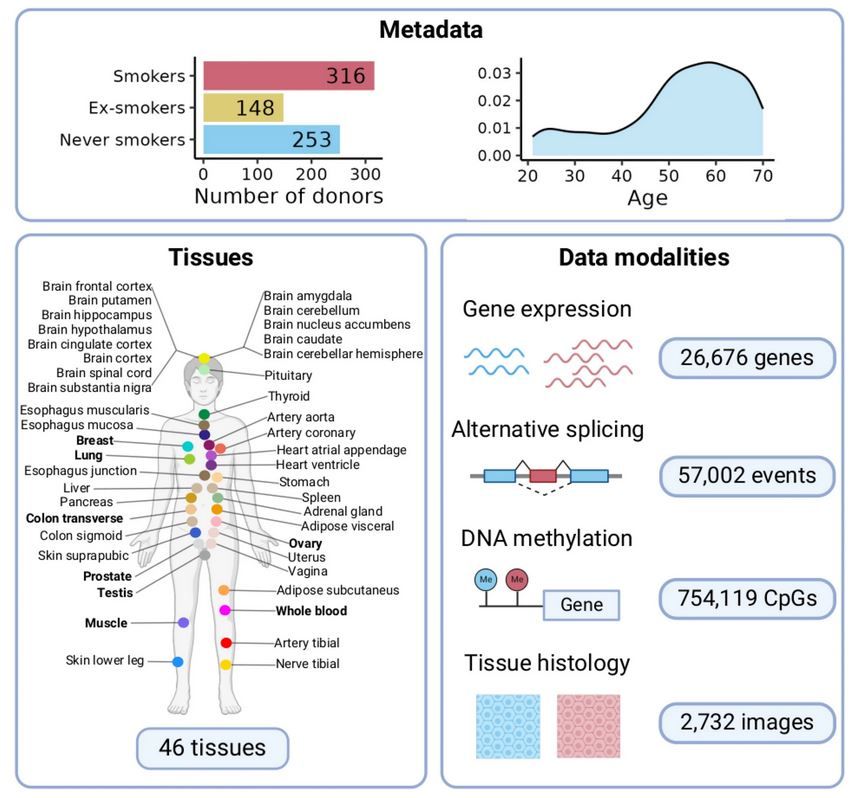PhDing at Barcelona Supercomputing Center | Exploring disease co-occurrences through omics, bioinformatics & HPC — with an eye on AI bias, and occasionally covered in clay.

A story of patience, absurdity, and persistence 🌀 <1min
From Alfonso Valencia’s lab and a very stubborn PhD student (me).
aboutdigitalhealth.com/2025/11/06/a...

aboutdigitalhealth.com/2025/11/06/a...
🔘Plataforma interactiva de red de conexiones entre enfermedades: disease-perception.bsc.es/rgenexcom/
@beatrizurda.bsky.social @alfonsovalencia.bsky.social
#DíaMundialCáncerMama #19Octubre

🔘Plataforma interactiva de red de conexiones entre enfermedades: disease-perception.bsc.es/rgenexcom/
@beatrizurda.bsky.social @alfonsovalencia.bsky.social
#DíaMundialCáncerMama #19Octubre
🔘Casi la mitad de estas conexiones tiene un origen que 𝘃𝗮➕𝗮𝗹𝗹á 𝗱𝗲𝗹 𝗔𝗗𝗡 y son potencialmente modificables.
🔘Casi la mitad de estas conexiones tiene un origen que 𝘃𝗮➕𝗮𝗹𝗹á 𝗱𝗲𝗹 𝗔𝗗𝗡 y son potencialmente modificables.
This study looked into whether gene activity (from RNA data) can help explain why
The answer: yes - more than we thought
Relevant as we are testing RNA in LC & ME/CFS patients @amaticahealth
Breakdown:

This study looked into whether gene activity (from RNA data) can help explain why
The answer: yes - more than we thought
Relevant as we are testing RNA in LC & ME/CFS patients @amaticahealth
Breakdown:
El estudio del BSC representa el mayor esfuerzo hasta la fecha para explicar científicamente las asociaciones clínicas entre enfermedades'
🗞En @innovaspain.bsky.social
➡ www.bsc.es/4kD
@alfonsovalencia.bsky.social @beatrizurda.bsky.social

El estudio del BSC representa el mayor esfuerzo hasta la fecha para explicar científicamente las asociaciones clínicas entre enfermedades'
🗞En @innovaspain.bsky.social
➡ www.bsc.es/4kD
@alfonsovalencia.bsky.social @beatrizurda.bsky.social
Disease links are not random—they can be predicted from the expression of our genes.
www.growkudos.com/publications...
@pnas.org @alfonsovalencia.bsky.social
📄 doi.org/10.1073/pnas...

Disease links are not random—they can be predicted from the expression of our genes.
www.growkudos.com/publications...
@pnas.org @alfonsovalencia.bsky.social
📄 doi.org/10.1073/pnas...
Scientists uncovered hidden links — with immune pathways playing a major role.
#GeneExpression #Comorbidity #PrecisionHealth
🔗 www.news-medical.net/news/2025090...

Scientists uncovered hidden links — with immune pathways playing a major role.
#GeneExpression #Comorbidity #PrecisionHealth
🔗 www.news-medical.net/news/2025090...
doi.org/10.1073/pnas...

doi.org/10.1073/pnas...
they can be predicted from the expression of our genes 🧬
And this is just the beginning.
Stay tuned for what comes next 👀🚀
www.agenciasinc.es/Noticias/El-...

www.agenciasinc.es/Noticias/El-...
But never mind: Beatriz won and the paper is now published in a better journal.
A story of patience, absurdity, and persistence 🌀 <1min
From Alfonso Valencia’s lab and a very stubborn PhD student (me).

But never mind: Beatriz won and the paper is now published in a better journal.
For scientific & personal reasons this one is special.
Beatriz has done more work and endured the most difficult - and absurd - publications battles I can remember.
Thanks to PNAS for being "normal" and congratulations to Beatriz.
(Beatriz: next one will be easier!)
🧬 64% of disease co-occurrences can be explained by transcriptomic similarities.
Comorbidities aren’t random—they have a molecular basis.
Here’s how we found it 👇 (1/n)
🔗 doi.org/10.1073/pnas.2421060122
@alfonsovalencia.bsky.social

For scientific & personal reasons this one is special.
Beatriz has done more work and endured the most difficult - and absurd - publications battles I can remember.
Thanks to PNAS for being "normal" and congratulations to Beatriz.
(Beatriz: next one will be easier!)
A story of patience, absurdity, and persistence 🌀 <1min
From Alfonso Valencia’s lab and a very stubborn PhD student (me).

A story of patience, absurdity, and persistence 🌀 <1min
From Alfonso Valencia’s lab and a very stubborn PhD student (me).
🧬 64% of disease co-occurrences can be explained by transcriptomic similarities.
Comorbidities aren’t random—they have a molecular basis.
Here’s how we found it 👇 (1/n)
🔗 doi.org/10.1073/pnas.2421060122
@alfonsovalencia.bsky.social

🧬 64% of disease co-occurrences can be explained by transcriptomic similarities.
Comorbidities aren’t random—they have a molecular basis.
Here’s how we found it 👇 (1/n)
🔗 doi.org/10.1073/pnas.2421060122
@alfonsovalencia.bsky.social
ℹMás info: www.bsc.es/4ke
💻 Acceder a la plataforma interactiva: disease-perception.bsc.es/rgenexcom/
📄 Publicado en @pnas.org
#supercomputación #IA #enfermedades
ℹMás info: www.bsc.es/4ke
💻 Acceder a la plataforma interactiva: disease-perception.bsc.es/rgenexcom/
📄 Publicado en @pnas.org
#supercomputación #IA #enfermedades
- Best Talk: Beatriz Urda-García
- Best Poster Method: Arne Wehling
- Best Poster Application: Sebastian Urquiza-Zurich
- Best Poster Tool: Estefania Torrejon
Thanks to all the (poster) presenters!!! It's amazing to have you in our community!!

- Best Talk: Beatriz Urda-García
- Best Poster Method: Arne Wehling
- Best Poster Application: Sebastian Urquiza-Zurich
- Best Poster Tool: Estefania Torrejon
Thanks to all the (poster) presenters!!! It's amazing to have you in our community!!
@beatrizurda.bsky.social: Disentangling the genetic and non-genetic origin of disease co-occurrences
#ISMBECCB2025 #NetworkBiology

@beatrizurda.bsky.social: Disentangling the genetic and non-genetic origin of disease co-occurrences
#ISMBECCB2025 #NetworkBiology
🏡 We are the #EU-CIP project. We are building the #CancerInfoPortal - home for reliable and easy to understand information cancer patients and their families and carers in Europe.
🤝 We just kicked-off the project with partners from 18 European countries. Let's introduce you to EU-CiP. 1/7

Enter your location and be moved. showyourstripes.info/c/europe/spa...

Enter your location and be moved. showyourstripes.info/c/europe/spa...
⭕This is the 1st comprehensive, multi-tissue analysis to show that smoking doesn’t just harm specific organs like the lungs 🫁
📄By BSC & Universidade do Porto researchers, published in Genome Medicine: bsc.es/Zt2

⭕This is the 1st comprehensive, multi-tissue analysis to show that smoking doesn’t just harm specific organs like the lungs 🫁
📄By BSC & Universidade do Porto researchers, published in Genome Medicine: bsc.es/Zt2
In our latest pre-print, 2nd of my PhD, we performed a Systematic Literature Review on the use of Deep Representational Learning (DRL), especially the Variational Autoencoder (VAE), in cancer progression research.
This thread explains our main findings.
(1 minute read)
In our latest pre-print, 2nd of my PhD, we performed a Systematic Literature Review on the use of Deep Representational Learning (DRL), especially the Variational Autoencoder (VAE), in cancer progression research.
This thread explains our main findings.
(1 minute read)
We now know when to focus interventions
🧪
www.nature.com/articles/s41...

We now know when to focus interventions
🧪
www.nature.com/articles/s41...
I am very happy to announce the first paper in my Ph.D. thesis journey:
Exploring the Boundaries of Medulloblastoma Subgroups with synthetic Data Generation -> www.biorxiv.org/content/10.1...
Let’s dive in into our findings with this thread! 🧵⤵️

I am very happy to announce the first paper in my Ph.D. thesis journey:
Exploring the Boundaries of Medulloblastoma Subgroups with synthetic Data Generation -> www.biorxiv.org/content/10.1...
Let’s dive in into our findings with this thread! 🧵⤵️

